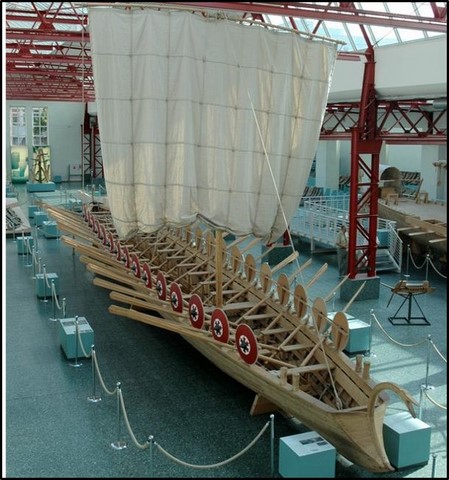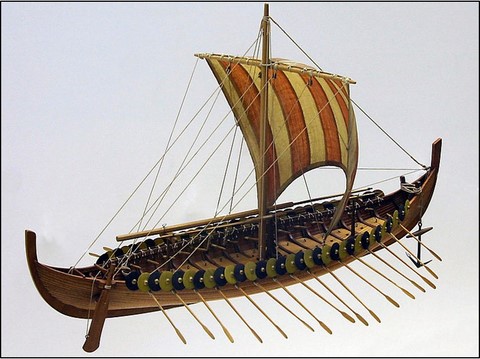Gunnar Heinsohn's latest: How did so many Roman elements (1st-3rd cent. AD) make into the Viking age (8th-10th cent AD)?
The first international Conference on Truso: Viking globalization - Truso from the perspective of Baltic commercial centers


Reconstruction of the 890 AD Viking Gokstad boat with square sail and clinkered hull
-How could Scandinavian and Baltic peoples of Antiquity and Late Antiquity fail to adopt sails, ports and breakwaters when there were countless experts from Europe who could teach them, and even low-value Roman coins spread throughout their territories? How could these peoples, after 700 CE, become the world‘s uncontested master seafarers when – after the lethal and irreversible fall of Roman civilization – there was nobody left to teach them? How could they understand classical Latin and create items of Antiquity and Late Antiquity – which they imitated perfectly, right down to the chemical fingerprints of Roman paints and glass pastes – when they did not even have ancient strata beneath their habitats from which they could dig up and copy the material culture of Rome?
-How could Arabs of Antiquity and Late Antiquity, the Vikings‘ trading partners, fail, for some 700 years, to write texts or issue coins when there were countless experts all over the Mediterranean who could teach them such basics? How, after 700 CE, could the Arabs become uncontested masters of these cultural techniques when Roman civilization had been crushed, and there were no specialists left to teach them these skills?
-How is it possible that sites devastated in the 3rd c. exhibit the same architecture and crafts as early medieval sites devastated in the 10th c. CE? How can one explain that sites dated to Antiquity (1st-3rd c.) are as stratigraphically close to the High Middle Ages (10th/11th c.) as Early Medieval sites if they are not contemporary?
Go to Conference presentation in pdf

